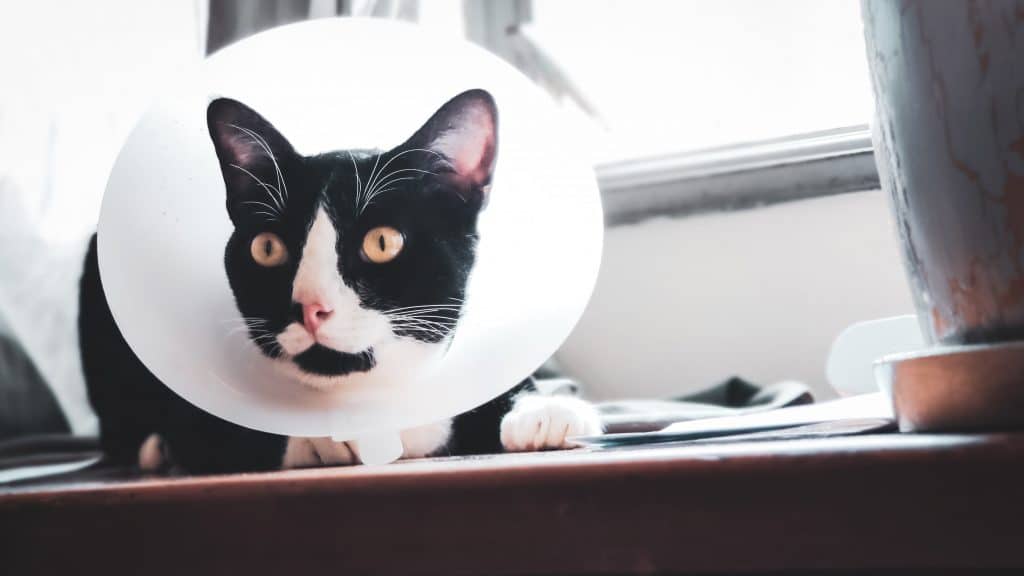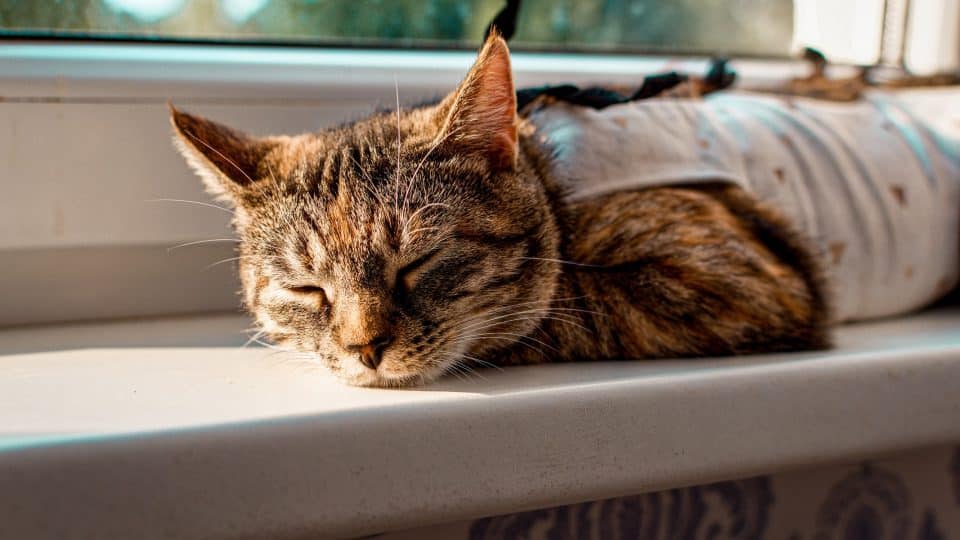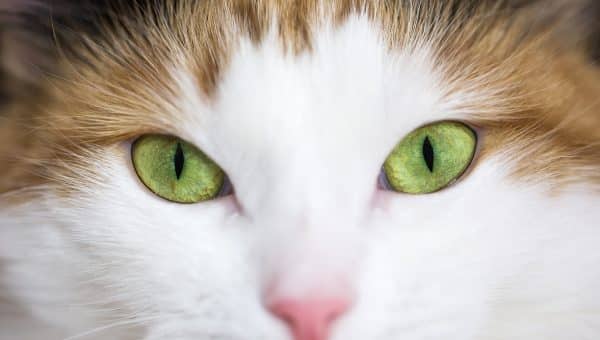Even those who don’t own a cat will have heard the terms ‘neutering’ or ‘spaying’ — aka when we castrate our cats to prevent reproduction. Neutering is when the procedure is done in males, while spaying refers to females. The word ‘fixing’ is used in reference to both, too.
Neutering and spaying are done for many reasons, from health benefits to improved behavior. Fixing is also used to control the feline population, as it helps prevent unplanned pregnancy and breeding.
According to Dr. Brian Evans, DVM and Medical Director at Dutch, an online pet health care service, while cats are likely to experience some pain during the procedures and soreness as they recover, “the pain can be managed with injectable pain medications on the day of the surgery and oral pain medications that are continued at home.” Your vet will be able to help you come up with a more detailed recovery plan to keep your cat comfortable during their recovery.
Why Should Cats Be Neutered Or Spayed?
Research suggests around 80% of US households with cats have their pet fixed, and pet parents are generally in favor of the procedure. But why is it important? Spaying and neutering carry a wide array of benefits, including the following.
Controls overpopulation
Put simply, spaying and neutering prevent overpopulation. “How is it possible for the world to have too many cats?”, we hear you cry. While we agree with the sentiment, overpopulation is really just another way of saying that people aren’t always able to provide the care and attention cats need to thrive and stay healthy. Sadly, this can result in cats abandoned in shelters or left to roam the streets.
Stray cats are significantly more likely to be affected by diseases, and “the feral cat population has a negative impact on wild bird populations, as well as spreading zoonotic parasites in places like children’s sandboxes,” Evans said.
Prevents certain health problems
We all want our cats to be healthy, and neutering or spaying can help lower your cat’s risk of developing various illnesses.
Some researchers found that cats spayed before one year of age are up to 86% less likely to develop mammary tumors, while others found that fixed cats have a lower risk of catching feline immunodeficiency virus (FIV) and feline leukemia virus (FeLV).
Spaying can also help prevent female cats from developing uterine problems such as pyometra, which can make them very sick and require emergency surgery, Evans said.
Changes unwanted behaviors
Love your cat, but not so much a fan of some behaviors? Neutering can lower tendencies of urine spraying and aggression, along with displays of sexual behaviors. Meanwhile, spaying a female cat means she will no longer go into heat — thus reducing related behaviors such as urine spraying, menstrual bleeding, and being excessively noisy.
Increases life expectancy
You’ll want to enjoy as many days with your cat as possible, and fixing your cat can help extend their lifespan. Research revealed neutered cats live 62% longer than their unneutered counterparts, while spayed females enjoy 39% more days than unspayed kitties.
This is believed to be due to numerous factors, from a lower risk of cancer and infectious disease to a smaller chance of being hit by a car while outside trying to find a mating partner.
Eliminates heat cycles
Heat is when a cat is most fertile and occurs between spring and autumn. During this period, heat ‘cycles’ typically last around a week and repeat every two to three weeks.
“Spaying your female cat will prevent her from having heat cycles, which can cause her to become quite vocal,” Evans said.

iStock/Valeriya
When Can Cats Be Fixed?
Technically, a cat can be neutered or spayed at any point — meaning that if you take in an older and unfixed cat, they can still have the procedure.
If you’re a kitten parent, “I recommend [for] cats to be spayed around six months of age,” said Dr. Sehaj Grewal, DVM. Fixing your cat around this time “lessens the chances of reproductive cancer and other hormonal diseases,” he added.
However, pediatric neutering — which occurs before the cat turns six months old — is becoming more popular. One study showed that doing so reduces the cat’s risk of developing a mammary tumor by 91% (compared to 86% at one years-old).
For many years, veterinarians believed fixing too early could stunt growth, but research suggests otherwise. Fixing before six months is not linked to an increased risk of death or health issues, but it is worth noting that it can increase shyness levels. Speak with your vet to discuss the best approach for your cat.
How Are Cats Spayed Or Neutered?
Spaying and neutering are relatively quick, typically taking less than 20 minutes — although the exact duration depends on your cat’s gender and size. “Both are elective procedures performed under general anesthesia,” Grewal said, and you shouldn’t give your cat any food the night before to help avoid complications with this.
During neutering, the vet makes a small cut into the scrotum, through which the testes are removed. In spaying, a small incision is made in the abdomen, through which the ovaries are taken out.
“Traditionally with cat spays, veterinarians have removed both the ovaries and the uterus — though there is little need to remove the uterus,” Evans said. Nowadays, “more progressive veterinarians have advocated removing only the ovaries, as a way to reduce the pain and potential complications associated with traditional spays.”
Recovery Time for Spaying Or Neutering
The recovery time after spaying or neutering isn’t quite as speedy as the procedure itself, but your cat should be back on their feet before too long. “Most cats are healed within a week or so of the procedure,” Evans said.
As with all surgical procedures, there are complication risks, some more serious than others. The most common, Evans said, is cats licking their incision and potentially causing an infection. However, he adds that keeping your kitty in an E-collar or recovery suit and giving them their medication can help prevent this.
Both anecdotal and scientific evidence indicates weight gain can be an issue for neutered cats due to the hormonal changes during the procedure and that fixed cats may not require as much food afterward as non-fixed cats. Discuss with your vet whether cutting back on portion size is necessary for your kitty.
These procedures aren’t completely risk free, however the risk is low. To reduce the possibility of any complications, “it is important to get a health assessment done prior to the procedure,” Grewal added.
Very rare “complications include risk of anesthetic death [and] internal bleeding,” Grewal said. A French study found the death rate in cats from anesthesia to be just 0.12% — and this can be “prevented [through] vigilant drug administration and anesthetic monitoring,” he adds. Furthermore, Evans explained, “if your cat has a heart murmur or other evidence of heart disease, further testing may be recommended to help get them safely through the anesthesia.”

iStock/Omar Shamsuddin
How Much Does It Cost To Get A Cat Fixed?
Looking after our feline friends isn’t always cheap. The cost of spaying a cat is typically more expensive than neutering, as the procedure is more complicated. Spaying can be around $200, whereas neutering may be half this price.
If this isn’t financially doable for you, don’t panic. “Some hospitals and community services do it for free or at very low cost,” Evans said. PetSmart Charities offers a list of clinics providing low-cost fixing, as does the American Society for the Prevention of Cruelty to Animals. You could also ask your local shelter if they know of any free or low-cost providers.
Takeaway
Fixing is an important route to take with your feline: Not only for their health and wellbeing but to help control the overall cat population.
Organizations such as Alley Cat Allies are working to ensure stray cats are spayed or neutered through trap-neuter-return (TNR) programs. This involves carefully using box traps to trap a cat so it can be neutered at the local vet before being released back into the outdoors. So far, TNR has proven to be highly effective in reducing the number of stray kitties entering shelters and — even more positively — the amount being euthanized.





